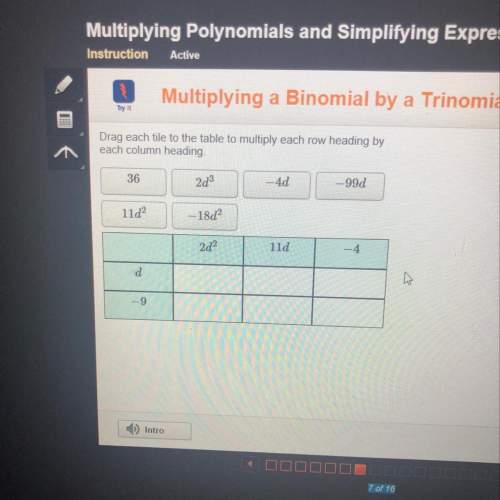
Mathematics, 16.10.2019 17:20 snot1766p5flsr
Bacteria are often grown on agar plates and form circular colonies. the area of a colony is proportional to the number of bacteria it contains. the agar (a gelatinous substance obtained from red seaweed) is the resource that bacteria use to reproduce and so only those bacteria on the edge of the colony can produce new offspring. therefore the population dynamics are nt+1 = nt + i, where i is the input of new individuals and is proportional to the circumference of the colony, with proportionality constant r. let the area of the colony be directly proportional to the number of bacteria by a constant of proportionality k. also let k = 2π k π . (a) derive the recursion for the population dynamics. (write your answers in terms of n, nt, k, and r.)

Answers: 2


Another question on Mathematics

Mathematics, 21.06.2019 21:00
Rewrite the following quadratic functions in intercept or factored form. show your work. y = 5x^2 + 10x
Answers: 1

Mathematics, 21.06.2019 21:50
What is the next step in the given proof? choose the most logical approach. a. statement: m 1 + m 2 + 2(m 3) = 180° reason: angle addition b. statement: m 1 + m 3 = m 2 + m 3 reason: transitive property of equality c. statement: m 1 = m 2 reason: subtraction property of equality d. statement: m 1 + m 2 = m 2 + m 3 reason: substitution property of equality e. statement: 2(m 1) = m 2 + m 3 reason: substitution property of equality
Answers: 3

Mathematics, 21.06.2019 23:30
What is the volume of a rectangular crate that has dimensions 9 inches by 9 inches by 1 feet? 1,458 in.3 121.5 in.3 1,012.5 in.3 36 in.3
Answers: 1

Mathematics, 22.06.2019 00:00
Zahra runs a 500-meter race at a constant speed. which graph shows her distance from the finish line during the race?
Answers: 1
You know the right answer?
Bacteria are often grown on agar plates and form circular colonies. the area of a colony is proporti...
Questions

Social Studies, 20.07.2019 03:40

Biology, 20.07.2019 03:40

Business, 20.07.2019 03:40



Biology, 20.07.2019 03:40




Mathematics, 20.07.2019 03:40


Mathematics, 20.07.2019 03:40


History, 20.07.2019 03:40

Mathematics, 20.07.2019 03:40

Social Studies, 20.07.2019 03:40


Biology, 20.07.2019 03:40

Mathematics, 20.07.2019 03:50





